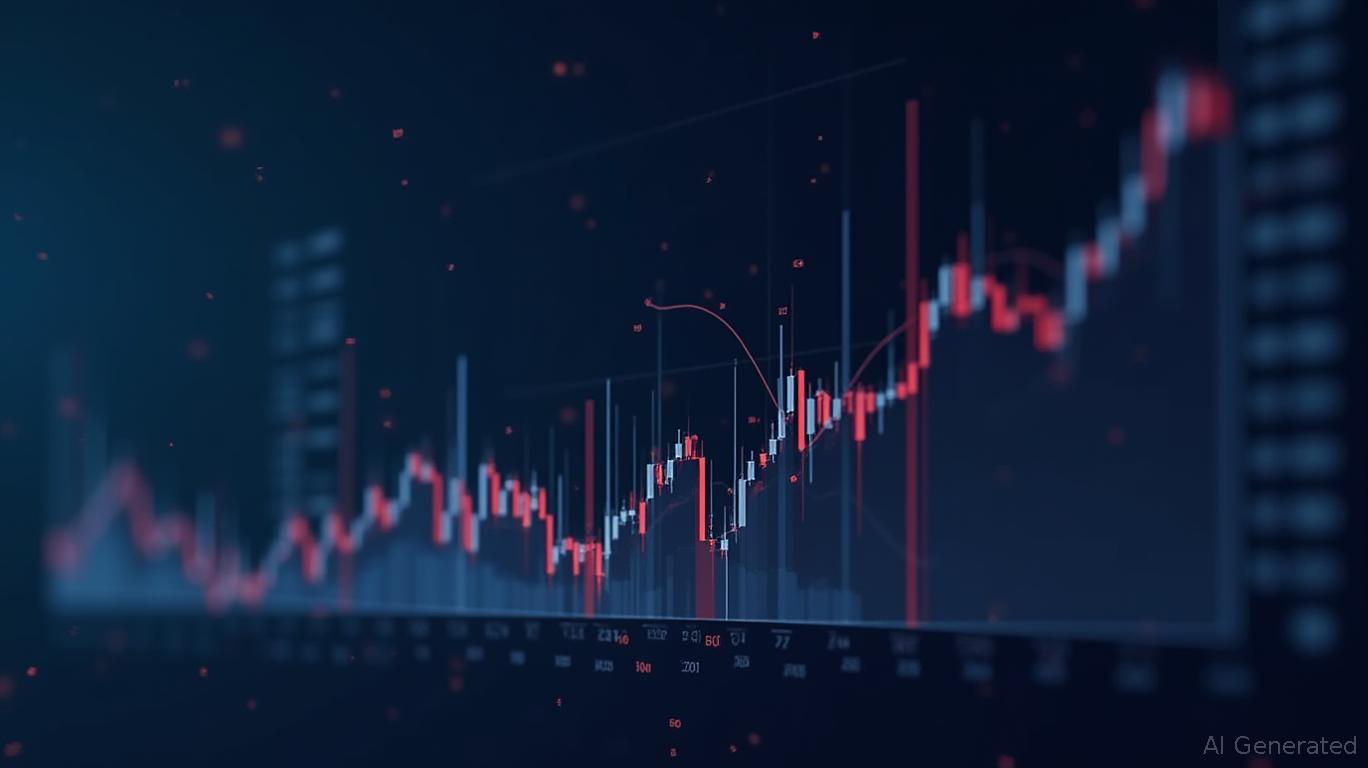The Rapid Decline in VIX: A Signal for Strategic Portfolio Rebalancing?
The CBOE Volatility Index (^VIX), a barometer of investor fear, has undergone a dramatic transformation in recent months. After spiking to a jaw-dropping 60.13 on April 7, 2025, the VIX has plummeted to 18.23 by June 6, marking a 1.4% drop in the final week of May alone. This sharp reversal raises a critical question: Is this decline a sign of sustained market calm, or merely a pause before the next storm? For investors, the answer hinges on understanding the interplay of mean reversion, historical volatility patterns, and the psychology of risk perception.

The Spike and the Slide: Contextualizing the VIX's Extreme Volatility
The mid-April surge to 60.13—the highest level in the provided data—likely reflected acute market stress, possibly triggered by geopolitical tensions, macroeconomic instability, or a liquidity crunch. By June, however, the VIX had retraced nearly 70% of its gains, settling near its lowest levels since early 2024. This rapid decline is not unprecedented; the VIX has historically exhibited a tendency to mean-revert after extreme spikes. For instance, in late 2024, the VIX averaged around 17–20, a range it now approaches again.
Mean Reversion: A Double-Edged Sword
While the VIX's retreat to 18.23 aligns with its pre-April average, investors must ask: Is this a return to “normal,” or a false sense of security? The answer lies in two dimensions:
Historical Anchoring:
The VIX's long-term average (since 1990) hovers around 18–20, a range it now straddles. This suggests mean reversion is intact—but also that the index is near its lower bound. Historically, prolonged stays below this range have often preceded rebounds. For example, in late 2024, the VIX dipped to 12.22 in June before climbing back toward 17–18 by year-end. The current 18.23 is close to this equilibrium, but not yet complacent.Market Psychology:
The VIX's plunge to 18.23 may reflect investor complacency, as risk-off sentiment fades. However, complacency can be a precursor to vulnerability. Consider that the April spike was itself a reaction to underpriced risks. A sudden drop to “calm” levels may signal overconfidence, not resilience.
Implications for Equity Exposure and Hedging Strategies
The VIX's decline creates both opportunities and risks for portfolios:
Equity Exposure:
With the VIX at 18.23, equities may continue to rally, particularly if earnings and economic data support momentum. However, investors should avoid overconcentration. A balanced approach—maintaining core equity exposure while trimming speculative bets—could mitigate downside risks if volatility rebounds.Volatility Instruments:
The VIX's drop has made volatility-linked instruments like VIX ETFs (e.g., VXX) or inverse volatility ETFs (e.g., XIV) less attractive. Conversely, long-dated put options on equities or indices become cheaper, offering cost-effective hedging. Investors should consider allocating 5–10% of portfolios to such hedges to protect against sudden spikes.Mean Reversion Trading:
Traders might exploit the VIX's proximity to its lower mean by shorting volatility or buying “cheap” out-of-the-money puts. However, this requires strict risk management, as mean reversion can be delayed by external shocks (e.g., geopolitical events).
A Cautionary Note: Mean Reversion ≠ Predictability
While mean reversion is a statistical tendency, it does not guarantee a linear path. The VIX's decline to 18.23 may signal stability, but it could also mark a pre-rebound consolidation. For instance, in late May 2025, the VIX briefly spiked to 25.53, underscoring lingering fragility. Investors must remain vigilant to catalysts like Fed policy shifts, earnings disappointments, or macroeconomic data surprises.
Conclusion: Rebalance with Prudence
The VIX's rapid decline to 18.23 suggests near-term stability but offers no guarantees. Portfolios should rebalance to reflect this dual reality:
Increase Equity Exposure Gradually:
Deploy cash reserves into sectors or regions that have underperformed during the volatility spike (e.g., cyclicals or emerging markets), but avoid aggressive overweights.Layer Hedging:
Use low-cost options or inverse volatility ETFs to protect gains without sacrificing upside potential.Monitor Technical Levels:
The VIX's next critical support zone is 16–17, below which complacency could become excessive. A breach here might signal a prolonged calm, while resistance at 22–24 could mark a rebound.
The VIX's dance between fear and complacency demands discipline. Investors who balance optimism with caution—reweighting equities while maintaining hedges—will be best positioned to navigate whatever comes next.

Comments
No comments yet